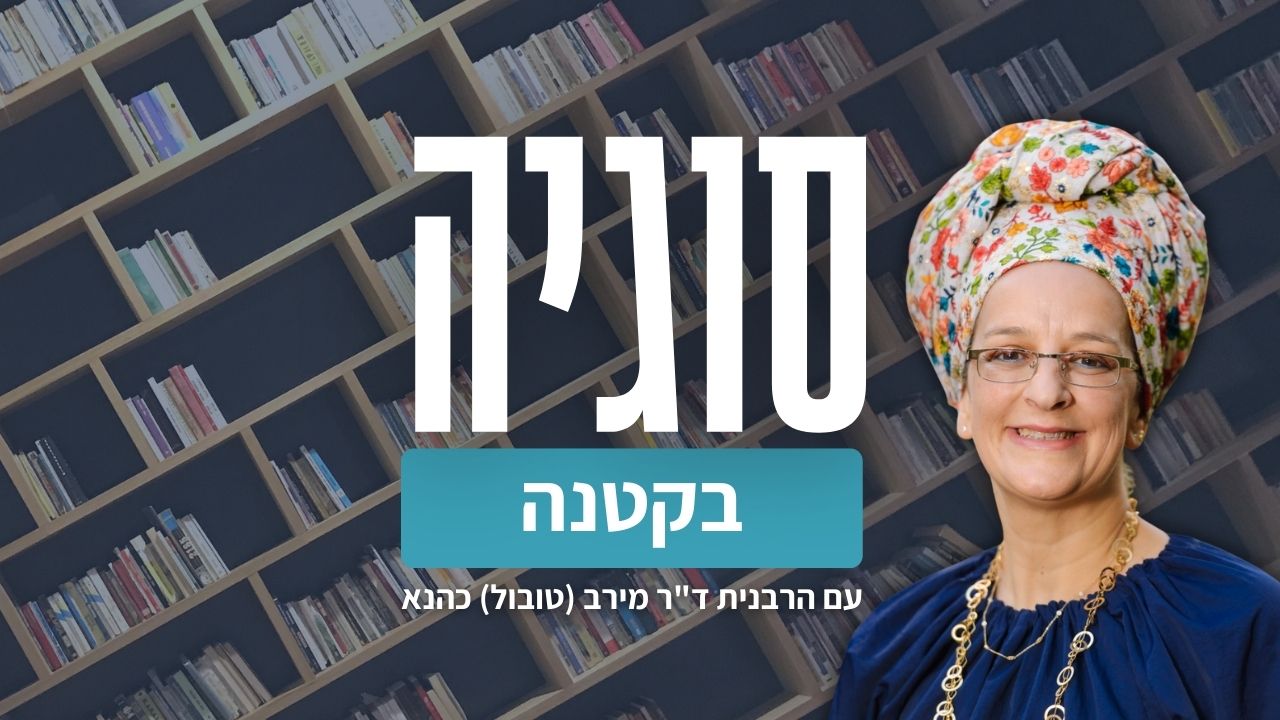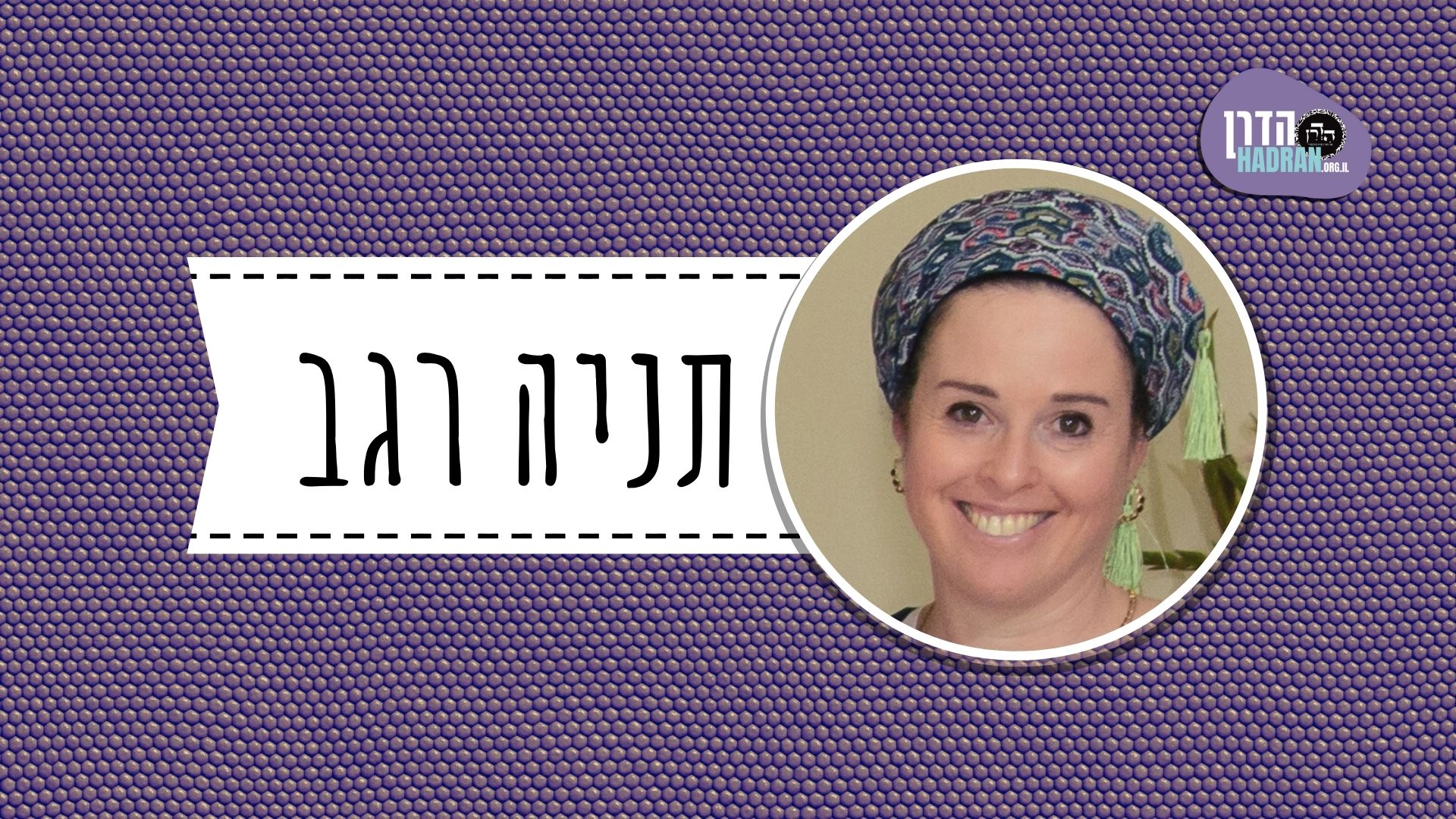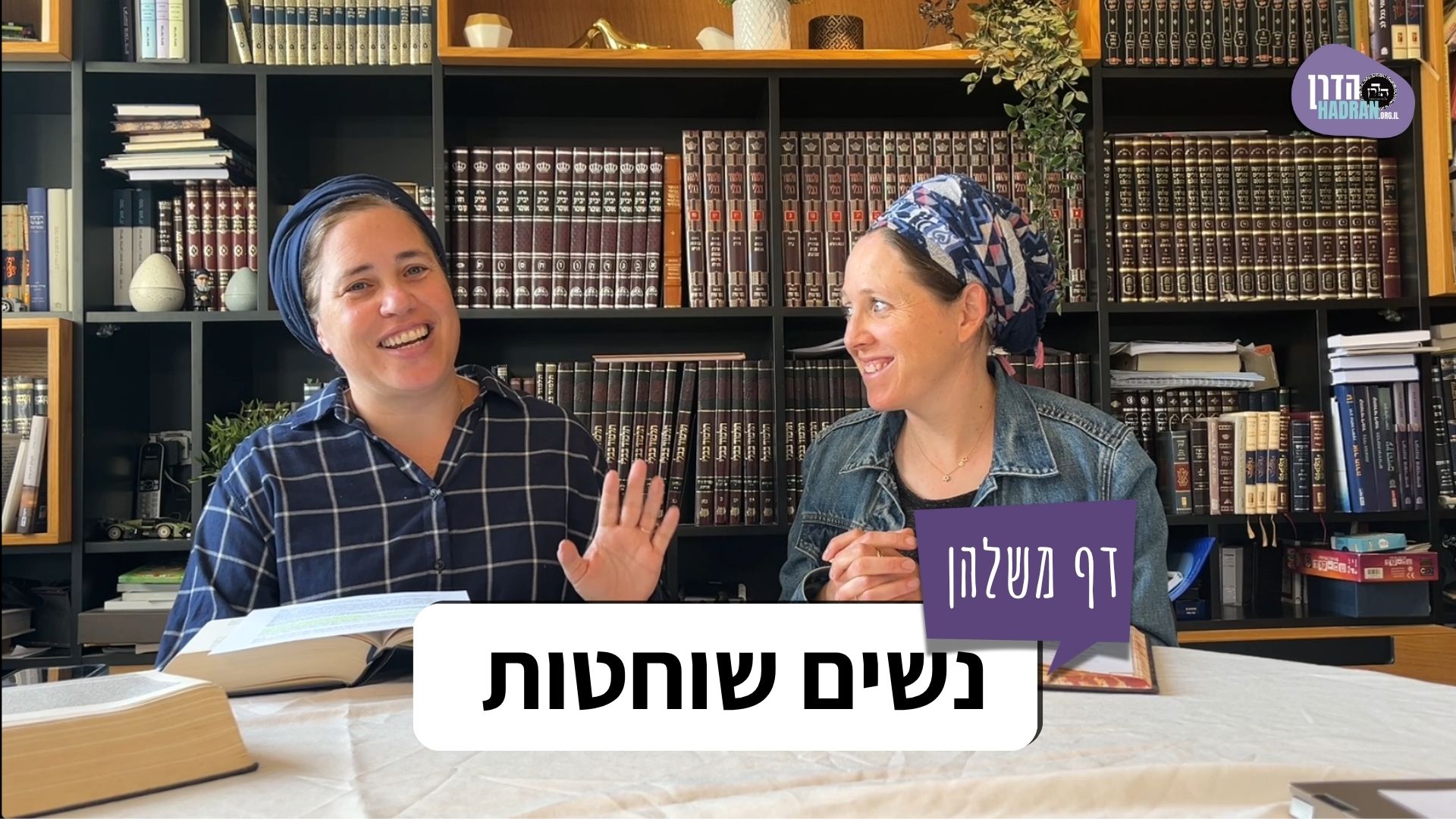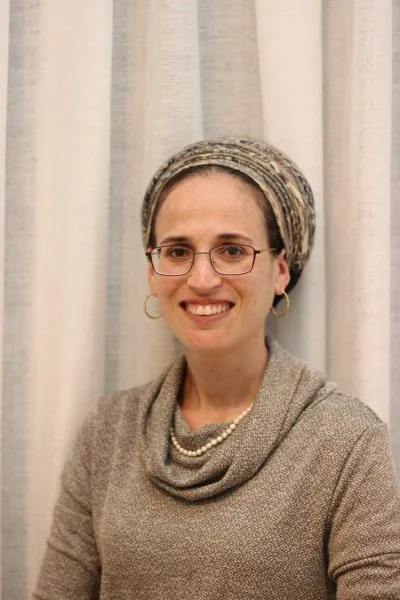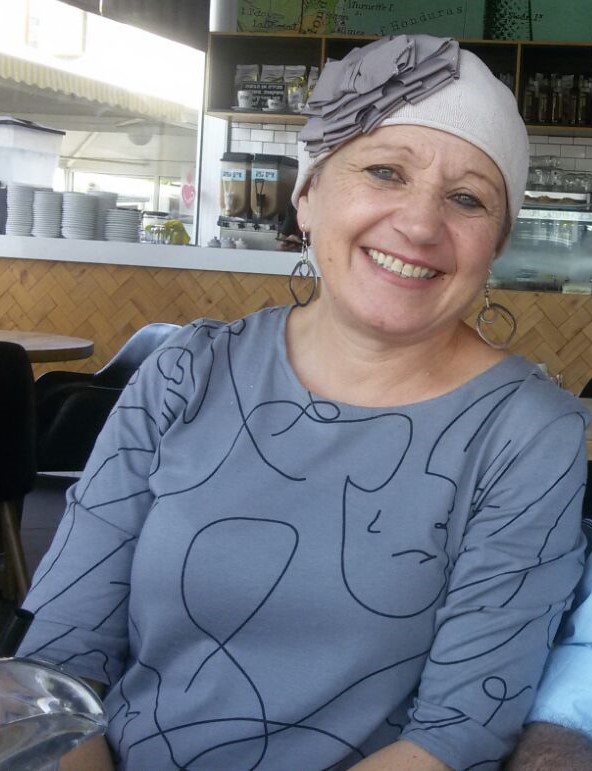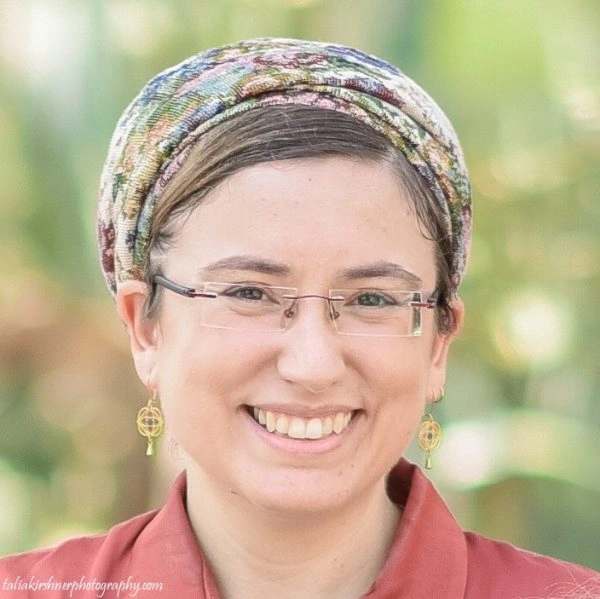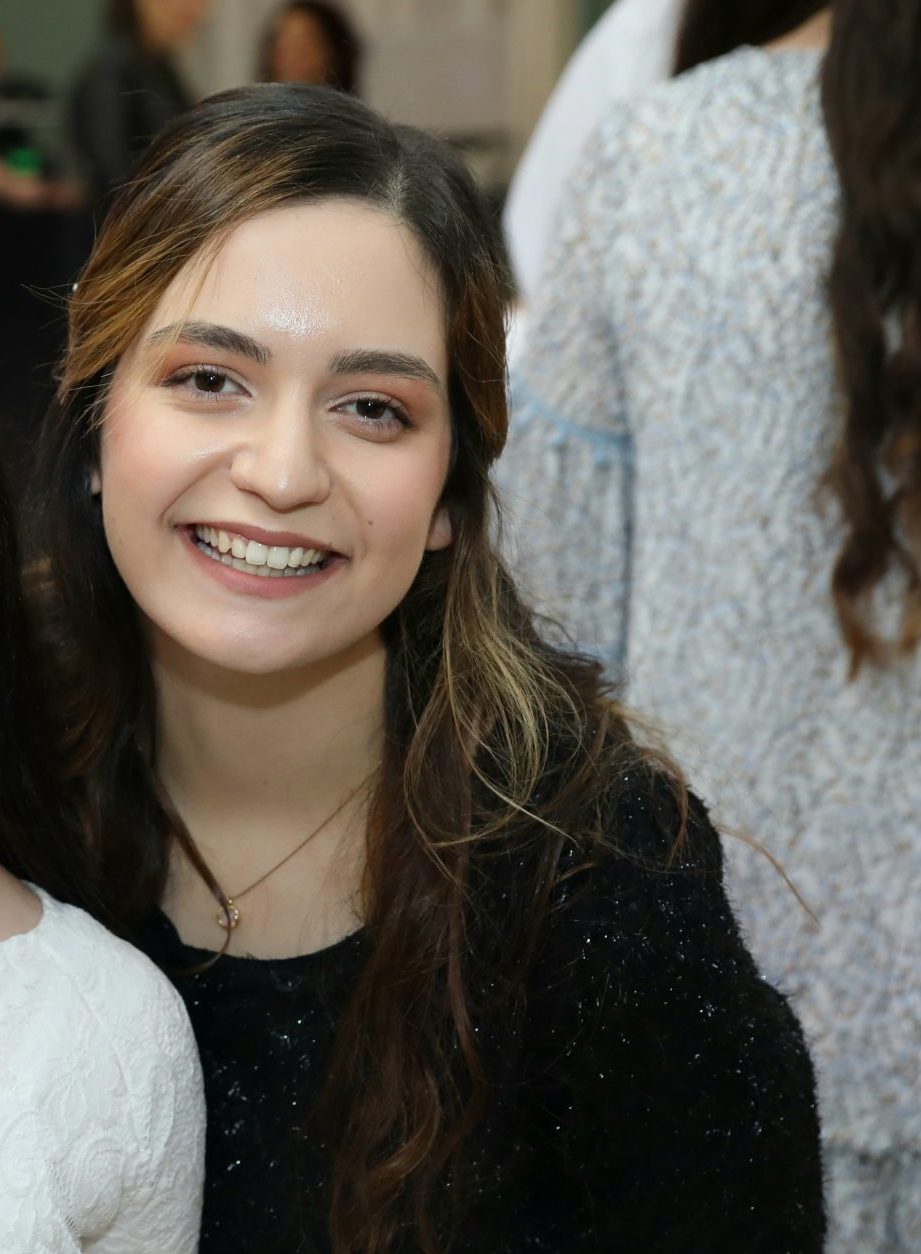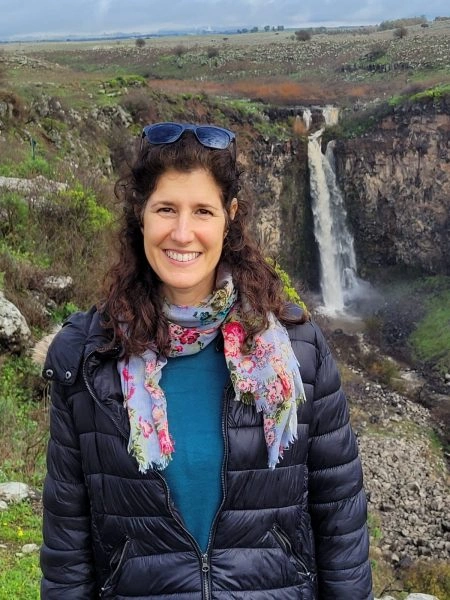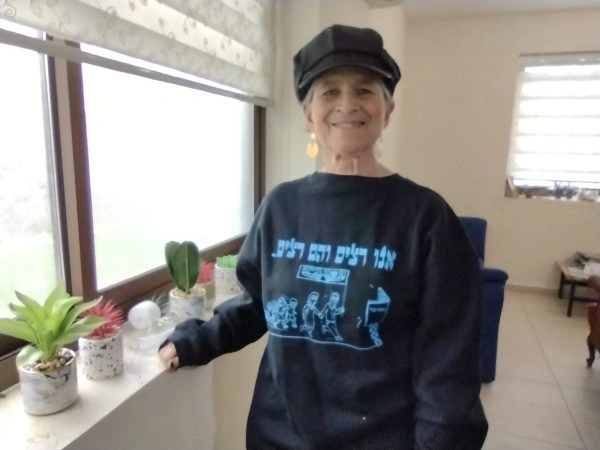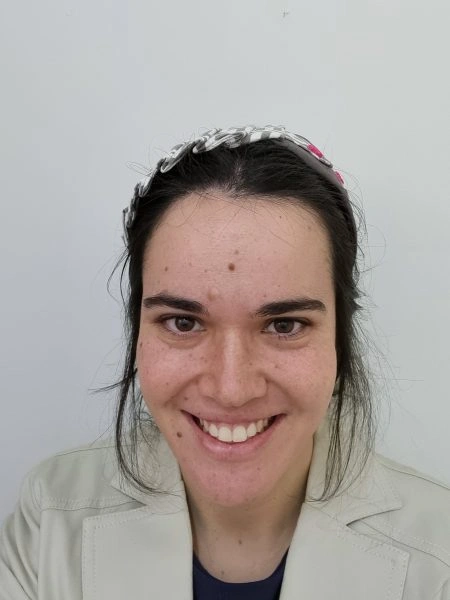מסכת זבחים
מסכת זבחים מוקדש ע”י אסתר קרמר לע”נ אביה מני גרוס.
הלימוד השבוע מוקדש ע”י אודרי מנדרו לע”נ יחזקאל בן רחל ואברהם.
רוצה להקדיש שיעור?

תקציר
שלושה מעשים נעשו בתחתית המזבח בצד דרום-מערב, כפי שנדרש מפסוקים בתורה. עולת העוף הובאה בדרך כלל בצד דרום-מזרח, כדי שהכהן יהיה קרוב לבית הדשן, שם נזרקו חלקים מהעוף כדי להיפטר מהם. שלושה מעשים נעשו בראש המזבח בצד דרום-מערב, והכהן המבצע את הפעולה היה הולך ישירות לשם במקום להקיף את המזבח כולו. הסיבה לכך הייתה כדי למנוע פגיעה בפריטים מהעשן העולה בראש המזבח.
המשנה מתארת בפירוט כיצד הוקרבה חטאת העוף. ברייתא מביאה מקור המסביר מדוע דם הקרבן הזה ניתן בתחתית המזבח ולא בחלקו העליון, כמו בחטאת הבהמה. מובאות שתי גרסאות שונות לביצוע מליקה – אחת בשם רב ואחת מברייתא. פעולה זו נחשבה לאחת הקשות שהכהן נדרש לבצע. גם ביצוע קמיצה במנחה וחפינה בקטורת ביום הכיפורים נחשבו לקשים.
המשנה מתארת בפירוט כיצד הובאה עולת העוף. חלק מהאלמנטים היו דומים לחטאת, אך רבים היו שונים. לדוגמה, הראש לא נכרת בחטאת, אך כן בעולה. כל העוף נאכל על ידי הכהנים בחטאת, ואילו בעולה הוא נשרף כולו, מלבד החלקים שנזרקו לבית הדשן (הזפק, הנוצות והקרביים). הבדלים נוספים כוללים את הדינים של הקרבה בכוונה לקרבן מסוג אחר. חטאת נפסלת, כמו בקרבנות בהמה, ואילו עולה אינה נפסלת. דיני פיגול הרגילים חלים על שתיהן.
כלים
מסכת זבחים
מסכת זבחים מוקדש ע”י אסתר קרמר לע”נ אביה מני גרוס.
הלימוד השבוע מוקדש ע”י אודרי מנדרו לע”נ יחזקאל בן רחל ואברהם.
הדף היום מוקדש ע”י טרי קריבושה והרב חיים הרינג לכבוד העלייה של בתם תמר דוידה.
כלים
העמקה
רוצה להבין מה באמת קורה מתחת לפני השטח של הסוגיה?
שיעורים, פודקאסטים והרחבות של מיטב המורות שלנו יפתחו לך עוד זוויות וכיווני חשיבה.
חדשה בלימוד הגמרא?
זה הדף הראשון שלך? איזו התרגשות עצומה! יש לנו בדיוק את התכנים והכלים שיעזרו לך לעשות את הצעדים הראשונים ללמידה בקצב וברמה שלך, כך תוכלי להרגיש בנוח גם בתוך הסוגיות המורכבות ומאתגרות.
פסיפס הלומדות שלנו
גלי את קהילת הלומדות שלנו, מגוון נשים, רקעים וסיפורים. כולן חלק מתנועה ומסע מרגש ועוצמתי.
זבחים סד
שֶׁאִם הִיזָּה וְלֹא מִיצָּה – כְּשֵׁירָה; וּבִלְבַד שֶׁיִּתֵּן מִחוּט הַסִּיקְרָא וּלְמַטָּה מִדַּם הַנֶּפֶשׁ.
because if he sprinkled the blood but did not squeeze out the rest of it, it is still valid, provided that he places some of the blood of the soul anywhere on the altar from the red line and below. This version of the baraita states that the offering is valid no matter where on the altar its blood was squeezed out; but it is essential that blood is sprinkled on the lower half of the altar.
שְׁלֹשָׁה דְּבָרִים כּוּ׳. חַטַּאת הָעוֹף – הָא דַּאֲמַרַן.
§ The mishna teaches that there were three matters for which the portion of the southwest corner below the red line served as the proper location: The sacrificing of a bird sin offering, and the bringing of the meal offerings near the altar, and pouring the remaining blood. The Gemara cites sources to prove that each of these three matters was performed at the southwest corner: The source with regard to the bird sin offering is that which we said earlier (63b), that it is derived from a comparison to meal offerings.
הַגָּשׁוֹת – דִּכְתִיב: ״וְהִגִּישָׁהּ אֶל פְּנֵי הַמִּזְבֵּחַ״. שְׁיָרֵי הַדָּם – דִּכְתִיב: ״וְאֶת כׇּל דַּם הַפָּר יִשְׁפֹּךְ אֶל יְסוֹד הַמִּזְבֵּחַ״.
The source for bringing meal offerings near the altar at the southwest corner is derived from that which is written: “And he shall bring it to the front of the altar.” The source for pouring the remaining blood at the southwest corner of the altar is as it is written: “And all the remaining blood of the bull he shall pour out at the base of the altar” (Leviticus 4:7), which the Gemara derives to be referring to the southwest corner (see 53a).
מִלְּמַעְלָה: נִיסּוּךְ הַמַּיִם, וְהַיַּיִן, וְעוֹלַת הָעוֹף כְּשֶׁהִיא רַבָּה בַּמִּזְרָח. מַאי טַעְמָא? רַבִּי יוֹחָנָן אָמַר: מִפְּנֵי שֶׁקְּרוֹבָה מִבֵּית הַדֶּשֶׁן.
§ The mishna teaches that there were three matters for which the portion of the southwest corner above the red line served as the proper location: The water and wine libations, and sacrificing a bird burnt offering when they were numerous in the east, i.e., the southeast corner. The Gemara asks: What is the reason the sacrificial rites of a bird burnt offering were ideally supposed to be performed at the southeast corner of the altar? Rabbi Yoḥanan says: Because it is the closest of all the corners to the place of the ashes, i.e., the place where the ashes from the altar are placed every morning. The crop and feathers of a bird burnt offering are placed there as well.
אָמַר רַבִּי יוֹחָנָן: בֹּא וּרְאֵה כַּמָּה גָּדוֹל כֹּחָן שֶׁל כֹּהֲנִים – שֶׁאֵין לָךְ קַל בָּעוֹפוֹת יוֹתֵר מִמּוּרְאָה וְנוֹצָה, פְּעָמִים שֶׁהַכֹּהֵן זוֹרְקָן יוֹתֵר מִשְּׁלֹשִׁים אַמָּה.
The Gemara cites a comment pertaining to the mishna’s statement that when the southeast corner of the altar is too crowded, the sacrificial rites of a bird burnt offering can be performed at the southwest corner: Rabbi Yoḥanan says: Come and see how great was the strength of the priests, as you have no parts of birds lighter than the crop and feathers, and there were times when the priest would toss them more than thirty cubits from the southwest corner of the altar to the place of the ashes.
דִּתְנַן: נָטַל מַחְתָּה שֶׁל כֶּסֶף, וְעָלָה לְרֹאשׁ הַמִּזְבֵּחַ, וּפִינָּה אֶת הַגֶּחָלִים אֵילָךְ וְאֵילָךְ, וְחָתָה מִן הַמְאוּכָּלוֹת הַפְּנִימִיּוֹת, וְיוֹרֵד. הִגִּיעַ לָרִצְפָּה – מַחֲזִיר פָּנָיו כְּלַפֵּי צָפוֹן, וְהוֹלֵךְ לְמִזְרָחוֹ שֶׁל כֶּבֶשׁ כְּעֶשֶׂר אַמּוֹת. צָבַר אֶת הַגֶּחָלִים עַל גַּבֵּי הָרִצְפָּה רָחוֹק מִן הַכֶּבֶשׁ שְׁלֹשָׁה טְפָחִים – מָקוֹם שֶׁנּוֹתְנִין מוּרְאָה וְנוֹצָה, וְדִישּׁוּן מִזְבֵּחַ הַפְּנִימִי וְהַמְּנוֹרָה.
This is as we learned in a mishna (Tamid 28b) describing the procedure of separating the ashes: The priest would take a coal pan of silver and ascend to the top of the altar and clear the upper layer of coals to this side and to that side, and, using the coal pan, scoop up coals from among the inner, consumed coals and descend the ramp. When he reached the floor of the Temple courtyard, he would turn his face to the left, toward the north, and walk about ten cubits along the eastern side of the ramp. There, he would heap the coals upon the floor at a distance of three handbreadths from the ramp. This was the location where one places the crop and feathers, and the ashes removed from the inner altar and the Candelabrum.
הָנֵי טְפֵי מִתְּלָתִין וְחַד הָוְיָין! מְקוֹם גַּבְרֵי לָא חָשֵׁיב.
The Gemara challenges: The distance from the southwest corner to the location described in that mishna is more than thirty-one cubits. The Gemara answers: Rabbi Yoḥanan did not consider the space taken up by people, i.e., the priest performing the service, in his calculation.
כׇּל הָעוֹלִים לְמִזְבֵּחַ, מַאי טַעְמָא? אָמַר רַבִּי יוֹחָנָן: נְסָכִים – שֶׁמָּא יִתְעַשְּׁנוּ, וְעוֹלַת הָעוֹף – שֶׁמָּא תָּמוּת בֶּעָשָׁן.
§ The mishna teaches that everyone who ascends the ramp to the altar ascends via the right side of the ramp, circles the altar until reaching the southwest corner, and descends via the left side of the ramp, with the exception of one ascending in order to perform the wine or water libations, or to sacrifice a bird burnt offering on the southwest corner of the altar. In those cases the priest would ascend directly to the southwest corner. The Gemara asks: What is the reason for these exceptions to the standard practice? Rabbi Yoḥanan says: With regard to the libations, the priest would not walk all the way around the altar lest the wine or water absorb the smoke of the altar fire. And with regard to a bird burnt offering he would not walk all the way around lest the bird die from inhaling the smoke.
וּרְמִינְהוּ: בָּא לוֹ לְהַקִּיף אֶת הַמִּזְבֵּחַ, מֵאַיִן הוּא מַתְחִיל? מִקֶּרֶן דְּרוֹמִית מִזְרָחִית, מִזְרָחִית צְפוֹנִית, צְפוֹנִית מַעֲרָבִית, מַעֲרָבִית דְּרוֹמִית; וְנוֹתְנִין לוֹ יַיִן לְנַסֵּךְ!
The Gemara raises a contradiction from the following mishna (Tamid 33b): If the High Priest was performing the sacrificial rites of the daily offering, after he would place the limbs on the fire on top of the altar and he would come to circle the altar, from where does he start walking? He starts from the southeast corner, continues to the northeast corner, then to the northwest corner, and finally arrives at the southwest corner. And he is given wine to pour on the altar. This indicates that the High Priest circles the altar while holding the wine for the libation, and there is no concern that it will absorb too much smoke.
אָמַר רַבִּי יוֹחָנָן:
Rabbi Yoḥanan says:
הַקָּפָה בָּרֶגֶל. אָמַר רָבָא: דַּיְקָא נָמֵי, דְּקָתָנֵי ״נוֹתְנִין לוֹ יַיִן לְנַסֵּךְ״, וְלָא קָתָנֵי ״אוֹמֵר לוֹ נַסֵּךְ״; שְׁמַע מִינַּהּ.
The circling around the altar by the High Priest is done on foot, i.e., empty-handed, as he was given the wine to pour only once he arrived at the southwest corner. Rava said: The language of the mishna is also precise, as it teaches that he is given wine to pour, and the mishna does not teach that one tells him to pour the wine, which would have indicated that the High Priest was already holding the wine as he circled the altar. The Gemara comments: Conclude from the language of the mishna that the High Priest was given the wine only once he arrived at the southwest corner of the altar.
תָּנוּ רַבָּנַן: כׇּל הָעוֹלִין לְמִזְבֵּחַ – עוֹלִין דֶּרֶךְ יָמִין וְיוֹרְדִין דֶּרֶךְ שְׂמֹאל, עוֹלִין דֶּרֶךְ מִזְרָח וְיוֹרְדִין דֶּרֶךְ מַעֲרָב; חוּץ מִן הָעוֹלֶה לִשְׁלֹשָׁה דְּבָרִים הַלָּלוּ – שֶׁעוֹלִים דֶּרֶךְ מַעֲרָב וְיוֹרְדִין דֶּרֶךְ מַעֲרָב, עוֹלִין דֶּרֶךְ יָמִין וְיוֹרְדִין דֶּרֶךְ יָמִין.
§ The Sages taught in a baraita: All those who ascend the ramp to the altar ascend via the right side of the ramp and descend via the left side; they ascend via the east side of the ramp and descend via the west side, except for one who ascends for one of these three matters: The wine libation, the water libation, and the sacrificial rite of a bird burnt offering. In these cases, one ascends via the west side of the ramp and descends via the west side; one ascends via the right side and descends via the right side.
״דֶּרֶךְ יָמִין״?! דֶּרֶךְ שְׂמֹאל הוּא! אָמַר רָבִינָא: תְּנִי ״שְׂמֹאל״. רָבָא אָמַר: מַאי ״יָמִין״ – יָמִין דְּמִזְבֵּחַ, וּמַאי ״שְׂמֹאל״ – שְׂמֹאל דְּגַבְרָא.
The Gemara asks: Does one who ascends via the west side of the ramp do so via the right side? Ascending via the west side of the ramp is the same as ascending via the left. Ravina says: Emend the baraita so that it teaches that he ascends via the left side. Rava says: What is the meaning of the right side mentioned in the latter clause of the baraita? It is the right side from the standpoint of the altar, facing south, in which case the altar’s west side is synonymous with its right side. And what is the meaning of the left side mentioned in the first clause of the baraita? It is the left side from the standpoint of a person facing the altar.
וְנִיתְנֵי אוֹ אִידֵּי וְאִידֵּי דְּמִזְבֵּחַ, אוֹ אִידֵּי וְאִידֵּי דְּגַבְרָא! קַשְׁיָא.
The Gemara objects: But let the baraita be consistent and teach both this case and that case, i.e., the first clause and latter clause, from the standpoint of the altar, or let it teach both this case and that case from the standpoint of a person facing the altar. The Gemara concedes: This is difficult.
מַתְנִי׳ חַטַּאת הָעוֹף כֵּיצַד הָיָה נַעֲשֵׂית? (עָלָה לַכֶּבֶשׁ וּפָנָה לַסּוֹבֵב בָּא לוֹ לְקֶרֶן דְּרוֹמִית מִזְרָחִית), הָיָה מוֹלֵק אֶת רֹאשָׁהּ מִמּוּל עׇרְפָּה וְאֵינוֹ מַבְדִּיל, וּמַזֶּה מִדָּמָהּ עַל קִיר הַמִּזְבֵּחַ. שְׁיָרֵי הַדָּם הָיָה מִתְמַצֶּה עַל הַיְסוֹד; וְאֵין לְמִזְבֵּחַ אֶלָּא דָּמָהּ, וְכוּלָּהּ לַכֹּהֲנִים.
MISHNA: The sacrifice of the bird sin offering, how was it performed? The priest would pinch off the bird’s head by cutting opposite its nape with his thumbnail and would not separate the bird’s head from its body. And he sprinkles from its blood on the wall of the altar below the red line. The remaining blood would be squeezed out from the body of the bird on the base of the altar. The altar has only its blood and the entire bird goes to the priests for consumption.
גְּמָ׳ תָּנוּ רַבָּנַן: ״וְהִזָּה מִדַּם הַחַטָּאת״ – מִגּוּף הַחַטָּאת. הָא כֵּיצַד? אוֹחֵז בָּרֹאשׁ וּבַגּוּף, וּמַזֶּה עַל קִיר הַמִּזְבֵּחַ; וְלֹא עַל קִיר הַכֶּבֶשׁ, וְלֹא עַל קִיר הֵיכָל, וְלֹא עַל קִיר אוּלָם. וְאֵיזֶה? זֶה קִיר הַתַּחְתּוֹן.
GEMARA: The Sages taught in a baraita: The verse states with regard to the bird sin offering: “And he shall sprinkle of the blood of the sin offering upon the side of the altar” (Leviticus 5:9). This teaches that the blood is sprinkled directly from the body of the sin offering, not with the priest’s finger or from a vessel. How so? The priest holds the head and the body and sprinkles its blood on the wall of the altar. And he does not sprinkle it on the wall of the ramp, and not on the wall of the Sanctuary, and not on the wall of the Entrance Hall. And which is this wall of the altar that the blood is sprinkled on? This is the lower wall, below the red line.
אוֹ אֵינוֹ אֶלָּא קִיר הָעֶלְיוֹן? וְדִין הוּא: וּמָה בְּהֵמָה, שֶׁעוֹלָתָהּ לְמַטָּה – חַטָּאתָהּ לְמַעְלָה; עוֹף, שֶׁעוֹלָתוֹ לְמַעְלָה – אֵינוֹ דִּין שֶׁחַטָּאתוֹ לְמַעְלָה?!
The baraita suggests: Or perhaps the verse is referring only to the upper wall, above the red line. And this should be a logical inference: Just as with regard to an animal offering, where the blood of a burnt offering is applied below the red line (see 10b), nevertheless, the blood of the sin offering is applied above the red line (see Leviticus 4:30), with regard to a bird offering, where the blood of the burnt offering is sprinkled above the red line (see 65a), is it not logical that the blood of its sin offering is sprinkled above the red line?
תַּלְמוּד לוֹמַר: ״וְהַנִּשְׁאָר בַּדָּם יִמָּצֵה אֶל יְסוֹד הַמִּזְבֵּחַ״ – קִיר שֶׁהַשְּׁיָרִין שֶׁלּוֹ מִתְמַצִּים לַיְסוֹד; וְאֵיזֶה? זֶה קִיר הַתַּחְתּוֹן.
Therefore, the verse states: “And the rest of the blood shall be squeezed out [yimmatze] at the base of the altar” (Leviticus 5:9), which teaches that the priest sprinkles the blood on the wall where its remaining blood drains to the base of the altar. And which wall is this? This is the lower wall. The surrounding ledge of the altar is located one cubit above the red line, and any blood sprinkled above this ledge will not drip down to the base of the altar. The verse teaches that the blood is sprinkled on the wall of the altar from which it would drip down to the altar’s base unimpeded.
וְנַעְבֵּיד מֵעִילַּאי, וַהֲדַר נַעְבֵּיד מִתַּתַּאי! אָמַר רָבָא: מִי כְּתִיב ״יְמַצֶּה״?! ״יִמָּצֵה״ כְּתִיב, דְּמִמֵּילָא מַשְׁמַע.
The Gemara suggests: Let the priest perform the sprinkling of the blood above, as the baraita logically deduced, and then perform the squeezing below in fulfillment of the aforementioned verse. Rava said: Is it written: He shall drain [yematze]? It is written: It shall be drained [yimmatze], which indicates that the blood trickles down to the base of the altar by itself. Accordingly, the blood must be sprinkled on a part of the altar wall from which it can trickle down to the base of the altar.
אָמַר רַב זוּטְרָא בַּר טוֹבִיָּה אָמַר רַב: כֵּיצַד מוֹלְקִין חַטַּאת הָעוֹף? אוֹחֵז גַּפָּיו בִּשְׁתֵּי אֶצְבָּעוֹת וּשְׁתֵּי רַגְלַיִם בִּשְׁתֵּי אֶצְבָּעוֹת, וּמוֹתֵחַ צַוָּארָהּ עַל רוֹחַב גּוּדָלוֹ, וּמוֹלְקָהּ.
§ Rav Zutra bar Toviyya says that Rav says: How does the priest pinch the nape of a bird sin offering? He holds the bird by its back in the palm of his hand and holds its wings with two fingers, i.e., the middle and index fingers, and its two legs with his next two fingers, i.e., the ring finger and pinky, leaving the head resting between his index finger and thumb, and he stretches its neck over the width of his thumb and pinches its nape with his thumbnail.
בְּמַתְנִיתָא תְּנָא: צִיפְּרָא מִלְּבַר; אוֹחֵז גַּפָּיו בִּשְׁתֵּי אֶצְבָּעוֹת וּשְׁנֵי רַגְלַיִם בִּשְׁתֵּי אֶצְבָּעוֹת, וּמוֹתֵחַ צַוָּארוֹ עַל רוֹחַב שְׁתֵּי אֶצְבְּעוֹתָיו, וּמוֹלֵק. וְזוֹ עֲבוֹדָה קָשָׁה שֶׁבַּמִּקְדָּשׁ.
The Gemara cites a varying opinion: It was taught in a baraita: The bird is not in the priest’s palm, but rather on the outside of his hand. The priest holds its wings with two fingers and its two legs with two fingers. Using his thumb, the priest bends its head into his palm and stretches its neck over the width of his two fingers, and pinches its nape. And this is the most difficult sacrificial rite in the Temple to perform.
זוֹ הִיא – וְתוּ לָא?! וְהָאִיכָּא קְמִיצָה וַחֲפִינָה! אֶלָּא אֵימָא: זוֹ עֲבוֹדָה קָשָׁה מֵעֲבוֹדוֹת קָשׁוֹת שֶׁבַּמִּקְדָּשׁ.
The Gemara asks: This is the most difficult rite to perform, and no other? But isn’t there also the removal of the handful of the meal offering and the handful of the incense on Yom Kippur? The Gemara answers: Rather, say that the pinching procedure was a difficult sacrificial rite, one of the most difficult sacrificial rites in the Temple to perform.
מַתְנִי׳ עוֹלַת הָעוֹף כֵּיצַד נַעֲשֵׂית? עָלָה לַכֶּבֶשׁ וּפָנָה לַסּוֹבֵב, בָּא לוֹ לְקֶרֶן דְּרוֹמִית מִזְרָחִית. הָיָה מוֹלֵק אֶת רֹאשָׁהּ מִמּוּל עׇרְפָּה, וּמַבְדִּיל, וּמִיצָּה אֶת דָּמָהּ עַל קִיר הַמִּזְבֵּחַ. נָטַל אֶת הָרֹאשׁ וְהִקִּיף בֵּית מְלִיקָתוֹ לַמִּזְבֵּחַ, סְפָגוֹ בְּמֶלַח, וּזְרָקוֹ עַל גַּבֵּי הָאִשִּׁים.
MISHNA: The sacrifice of the bird burnt offering, how was it performed? The priest ascended the ramp and turned to the surrounding ledge and came to the southeast corner of the altar. He would then pinch off the bird’s head by cutting at its nape with his thumbnail and separate the bird’s head from its body, and would squeeze out its blood on the wall of the altar. He took the head and neared the place of its pinching, i.e., its nape, to the altar in order to squeeze the blood from the head. He would then absorb the remaining blood with salt and throw the head onto the fire on the altar.
בָּא לוֹ לַגּוּף, וְהֵסִיר אֶת הַמּוּרְאָה וְאֶת הַנּוֹצָה וְאֶת בְּנֵי הַמֵּעַיִים הַיּוֹצְאִין עִמָּם, וְהִשְׁלִיכָן לְבֵית הַדֶּשֶׁן. שִׁיסַּע, וְלֹא הִבְדִּיל. וְאִם הִבְדִּיל – כָּשֵׁר. סוֹפְגוֹ בְּמֶלַח, וְזֹרְקוֹ עַל גַּבֵּי הָאִשִּׁים.
He then arrived at the body and removed the crop and the feather attached to it and the innards that emerge with them and he tossed them to the place of the ashes. He then ripped the bird lengthwise and did not separate the two halves of the bird; but if he separated them, the offering is valid. He would then absorb the remaining blood with salt and throw the body of the bird onto the fire on the altar.
לֹא הֵסִיר הַמּוּרְאָה וְלֹא הַנּוֹצָה וְאֶת בְּנֵי מֵעַיִים הַיּוֹצְאִין עִמָּם, וְלֹא סְפָגוֹ בְּמֶלַח – כֹּל שֶׁשִּׁינָּה בָּהּ מֵאַחֵר שֶׁמִּיצָּה אֶת דָּמָהּ, כְּשֵׁירָה. הִבְדִּיל בַּחַטָּאת וְלֹא הִבְדִּיל בָּעוֹלָה – פָּסוּל. מִיצָּה אֶת דַּם הָרֹאשׁ וְלֹא מִיצָּה דַּם הַגּוּף – פְּסוּלָה. דַּם הַגּוּף וְלֹא מִיצָּה דַּם הָרֹאשׁ – כְּשֵׁירָה.
If he neither removed the crop, nor the feather and the innards that emerge with them, nor absorbed the blood with salt, with regard to any detail that he changed in the sacrificial rites after he squeezed out its blood, the offering is valid. If he separated the head from the body in sacrificing the sin offering, or if he did not separate the head from the body in sacrificing the burnt offering, the offering is disqualified. In a case where he squeezed out the blood of the head and did not squeeze out the blood of the body, it is disqualified. If he squeezed out the blood of the body and did not squeeze out the blood of the head, the offering is valid.
חַטַּאת הָעוֹף שֶׁמְּלָקָהּ שֶׁלֹּא לִשְׁמָהּ; מִיצָּה דָּמָהּ שֶׁלֹּא לִשְׁמָהּ; לִשְׁמָהּ וְשֶׁלֹּא לִשְׁמָהּ; אוֹ שֶׁלֹּא לִשְׁמָהּ וְלִשְׁמָהּ – פָּסוּל. עוֹלַת הָעוֹף כְּשֵׁירָה, וּבִלְבַד שֶׁלֹּא עָלְתָה לִבְעָלִים לְשֵׁם חוֹבָה.
In the case of a bird sin offering that the priest pinched not for its sake, or if he squeezed out its blood not for its sake, or if he did so for its sake and then not for its sake, or not for its sake and then for its sake, it is disqualified, like all other sin offerings that are disqualified when performed not for their sake (see 2a). A bird burnt offering sacrificed not for its sake is valid; it is just that it did not satisfy the obligation of the owner.
אֶחָד חַטַּאת הָעוֹף וְאֶחָד עוֹלַת הָעוֹף, שֶׁמְּלָקָן וְשֶׁמִּיצָּה אֶת דָּמָן – לֶאֱכוֹל דָּבָר שֶׁדַּרְכּוֹ לֶאֱכוֹל, וּלְהַקְטִיר דָּבָר שֶׁדַּרְכּוֹ לְהַקְטִיר חוּץ לִמְקוֹמוֹ; פָּסוּל וְאֵין בּוֹ כָּרֵת. חוּץ לִזְמַנּוֹ – פִּיגּוּל, וְחַיָּיבִין עָלָיו כָּרֵת; וּבִלְבַד שֶׁיַּקְרִיב הַמַּתִּיר כְּמִצְוָתוֹ.
With regard to both a bird sin offering and a bird burnt offering where the priest pinched its nape or squeezed out its blood with the intent to partake of an item whose typical manner is such that one partakes of it, or to burn an item whose typical manner is such that one burns it on the altar, outside its designated area, the offering is disqualified. But there is no liability to receive karet for one who partakes of the offering. If his intent was to eat it or burn it beyond its designated time, the offering is piggul and one is liable to receive karet for partaking of the offering, provided that the permitting factor, the blood, was sacrificed in accordance with its mitzva.
כֵּיצַד קָרַב הַמַּתִּיר כְּמִצְוָתוֹ? מָלַק בִּשְׁתִיקָה, וּמִיצָּה הַדָּם חוּץ לִזְמַנּוֹ; אוֹ שֶׁמָּלַק חוּץ לִזְמַנּוֹ, וּמִיצָּה הַדָּם בִּשְׁתִיקָה; אוֹ שֶׁמָּלַק וּמִיצָּה הַדָּם חוּץ לִזְמַנּוֹ – זֶהוּ שֶׁקָּרַב הַמַּתִּיר כְּמִצְוָתוֹ.
How is the permitting factor sacrificed in accordance with its mitzva? If one pinched the nape in silence, i.e., with no disqualifying intent, and squeezed out its blood with the intent to partake of the parts typically eaten or to burn the portions that are to be burned on the altar, beyond its designated time; or in the case of one who pinched with the intent to partake of the offering or burn it on the altar beyond its designated time, and squeezed out its blood in silence; or in the case of one who pinched and squeezed out the blood with the intent to partake of the offering or burn it on the altar beyond its designated time, that is the case of a bird offering where the permitting factor is sacrificed in accordance with its mitzva.
כֵּיצַד לֹא קָרַב הַמַּתִּיר כְּמִצְוָתוֹ? מָלַק חוּץ לִמְקוֹמוֹ, מִיצָּה הַדָּם חוּץ לִזְמַנּוֹ; אוֹ שֶׁמָּלַק חוּץ לִזְמַנּוֹ, וּמִיצָּה הַדָּם חוּץ לִמְקוֹמוֹ; אוֹ שֶׁמָּלַק וּמִיצָּה הַדָּם חוּץ לִמְקוֹמוֹ;
How is the permitting factor not sacrificed in accordance with its mitzva? If the priest pinched the nape of the bird with the intent to partake of it or burn it outside its designated area and squeezed out its blood with the intent to partake of it or burn it beyond its designated time, or he pinched with the intent to partake of it or burn it beyond its designated time and squeezed out its blood with the intent to partake of it or burn it outside its designated area, or if the priest pinched and squeezed out the blood with the intent to partake of it or burn it outside its designated area,
